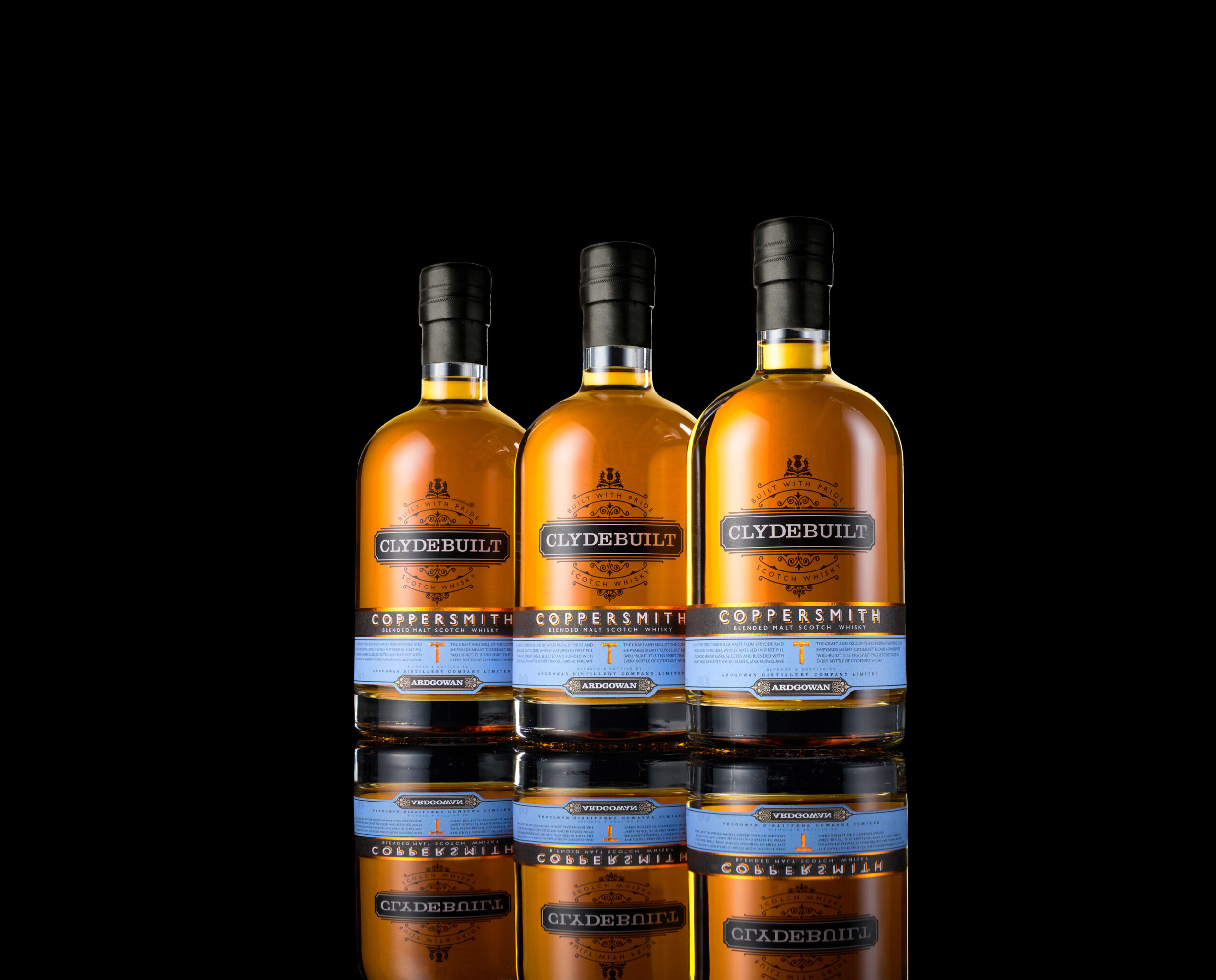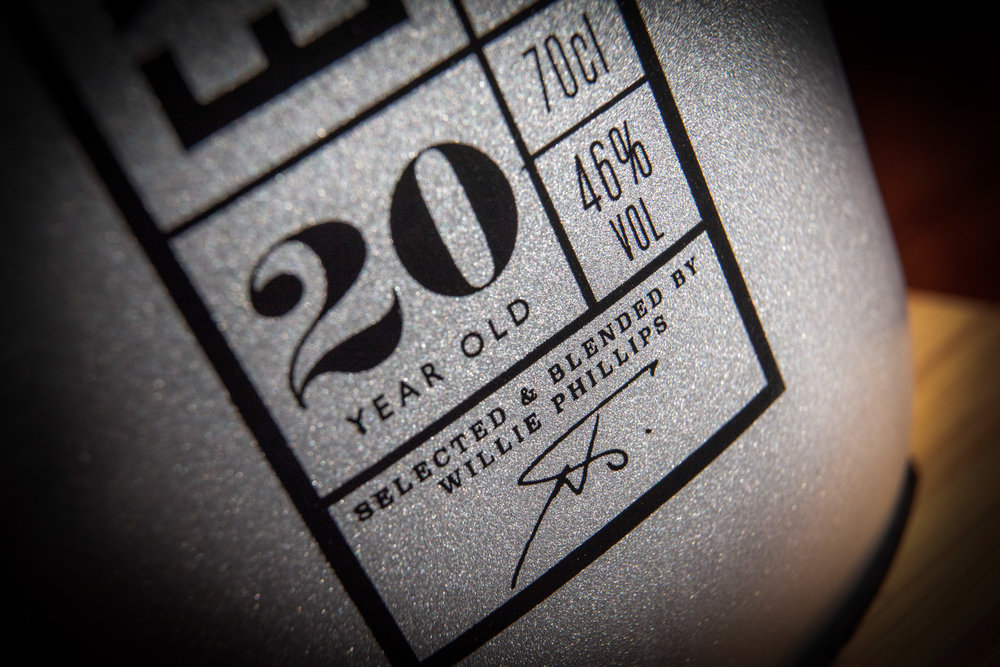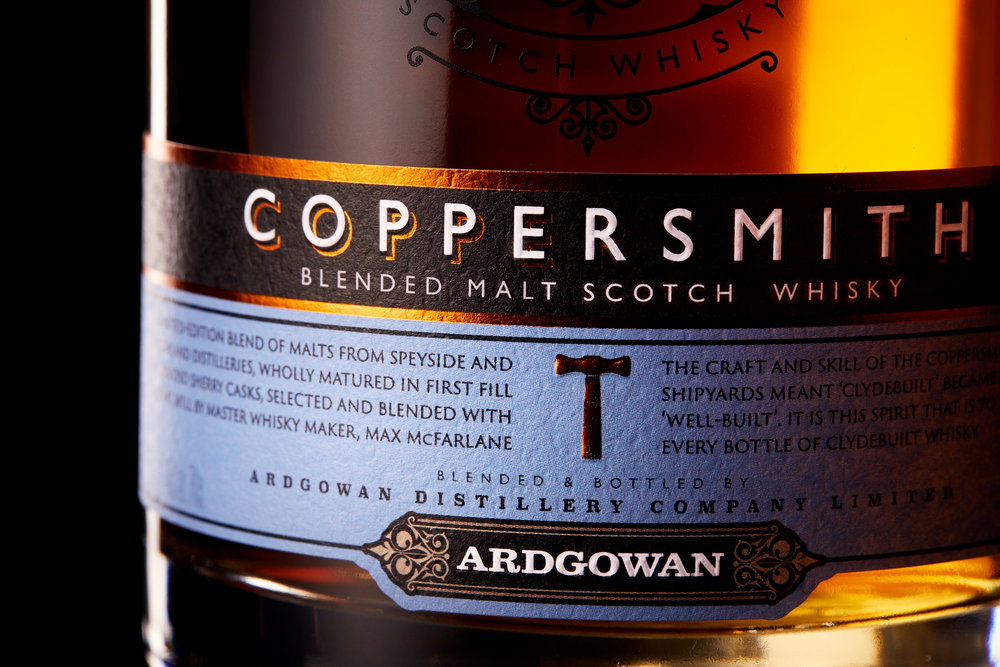Coppersmith takes gold in Scotch Whisky Masters
Coppersmith takes gold in Scotch Whisky Masters
Award-winning Independent Whisky
Bankfoot Farm, Inverkip, PA16 0DT
Scottish Whisky AwardsThe Ardgowan Distillery continues to take plaudits – this time securing gold for Clydebuilt Coppersmith in the 2021 Scotch Whisky Masters, hosted by The Spirits Business magazine.The limited-edition Coppersmith dram won gold in the Blended Malt – Super Premium category where the judges praised it for its “bags of oaky notes” and “underlying treacle sweetness”.
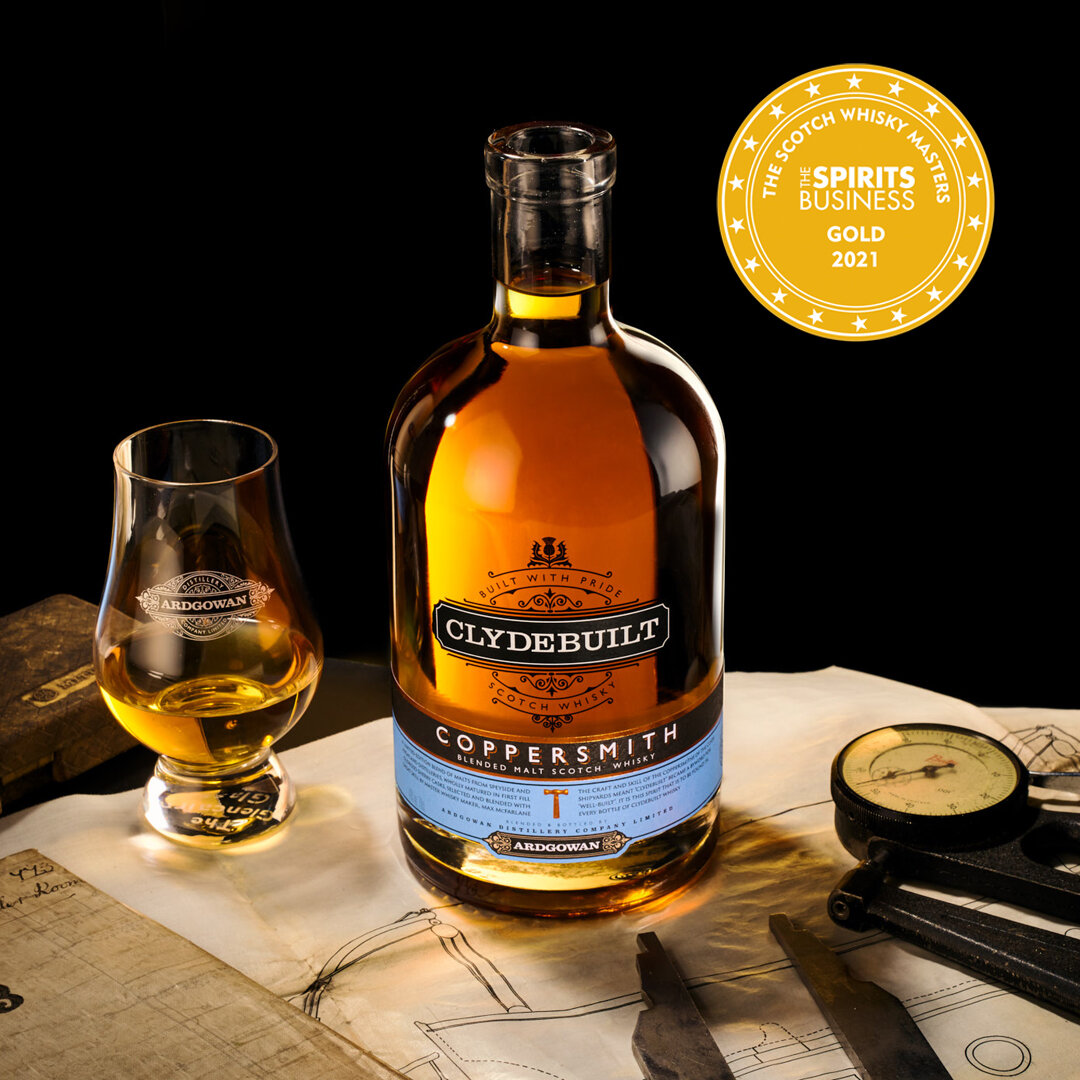
This year’s tasting was held remotely with a judging panel comprising Billy Abbott, ambassador for The Whisky Exchange, Matt Chambers and Karen Taylor, co‐founders of the Whisky for Everyone blog and chaired by Melita Kiely, editor of The Spirits Business magazine.
To ensure each entry was judged solely on the liquid, each whisky was decanted and shipped anonymously.
“This award underlines the quality of whisky we are able to make – guided by our master whisky maker Max McFarlane,” says distillery CEO Martin McAdam.
“Our very first whisky, Expedition, was awarded a gold medal in the 2019 Scottish Whisky Awards, with Coppersmith scooping silver in the same awards the following year. This now makes it a hat-trick for Ardgowan.
“We now only have a few dozen bottles of Coppersmith available for general sale – that is the nature of limited-edition whisky. After they are sold, we will retain a very limited supply for sale as part of the Clydebuilt Collection and for our distillery opening.
“But the good news is out latest release Shipwright is now available online and we are receiving great feedback from our growing base of fans.
“In the months and years ahead we will be releasing more whiskies in the Clydebuilt series, as well as ultra-limited one-offs in our Discovery series, and we hope for more awards to come,”
“The news of the win comes hot on the heels of our successful fundraising which will see the new distillery at Ardgowan become operational in 2023.
“We intend to bring the skills we have honed during the selection, blending, and bottling of the Clydebuilt whiskies to the Ardgowan single malt production.
“Our chairman Willie Phillips and our master whisky maker Max McFarlane both emphasise the importance of quality in everything we do. While sales of our own single malt is a few years away – our customers will know what to expect when it arrives,” McAdam concludes.
Green light for Ardgowan Distillery following major new investment of £8.4 million
Green light for Ardgowan Distillery
Award-winning Independent Whisky
Bankfoot Farm, Inverkip, PA16 0DT
Green light for ArdgowanArdgowan Distillery has announced work will begin this year on their new distillery which is being built on the Ardgowan Estate near Inverkip, 30 miles west of Glasgow.The company today confirmed a £8.4 million equity investment into the business. £7.2m of the new equity comes from Austrian investor Roland Grain and the balance from new and existing shareholders. The substantial new equity will allow Ardgowan to commence construction of their one million litre single malt distillery and visitor centre.
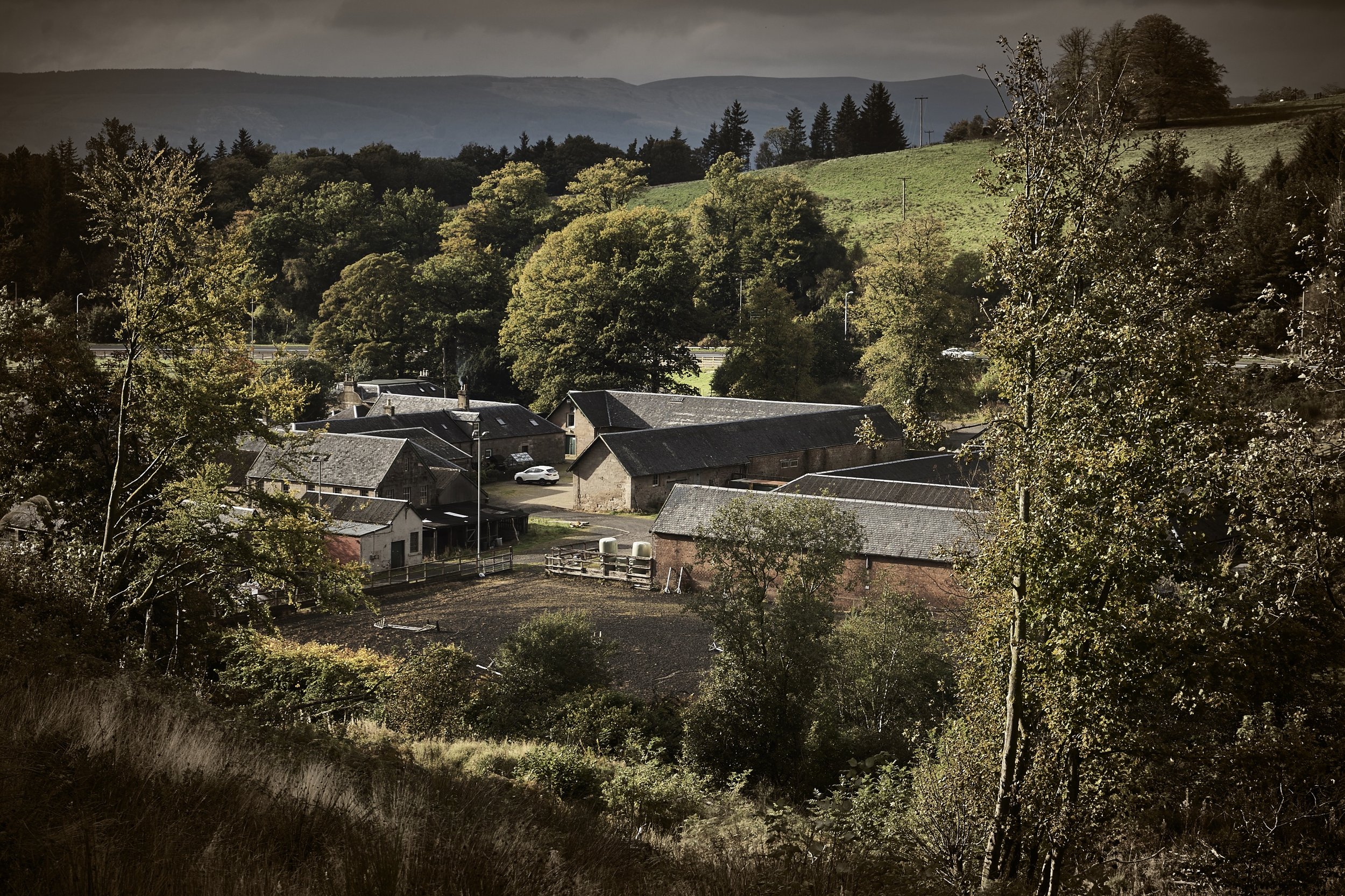
The distillery is also in discussion with a loan provider that will provide additional debt funding for the flagship project in the coming weeks.
Grain (47) is the founder, owner and CEO of IT company Grain GmbH which operates in 17 countries worldwide. He has a long track record of investment in distilleries.
“My passion for whisky began as a teenager in Austria when I began to collect Scotch whisky and today I am thrilled to become the major shareholder in the Ardgowan Distillery.
“My wish is for this project to create a lasting connection to the community and produce the highest possible quality whisky and over time achieve the lowest possible CO2 footprint,” Grain says.
“The company founders Martin McAdam, Alan Baker and I have a shared vision of what we can achieve. Already they have built a strong team around them – not least their chairman Willie Phillips and their whisky maker Max McFarlane – and together we will craft the finest quality single malt whisky based on the extraordinary location of the Ardgowan Estate and the unusual microclimate of the Inverkip area.
“My hope is that the distillery will become a landmark building and a significant tourist attraction in the years ahead, and I very much look forward to seeing work commence this year,” Grain says.
“Ardgowan Estate is less than an hour’s drive from Glasgow and in 2019 Greenock welcomed more than 100,000 cruise ship visitors, so I believe there is a great opportunity to capture this market with a first-class food, drink and retail tourist experience. We estimate the distillery and visitor centre will create up to 30 new jobs within five years,” Grain concludes.
Grain has a highly successful record of investing in the spirits industry. He started with a small investment in the Cotswolds Distillery and continued with investments in Manly Spirits (Sydney, Australia), the East London Liquor Company and Potstill Spirits Trading – Austria´s largest whisky importer. Most recently he has become a 20 percent shareholder in UK spirits business Distil Plc.

Distillery CEO Martin McAdam said:
“Roland Grain is a brilliant and passionate cornerstone investor who has global experience in investing in a whole range of spirits businesses. He is a genuine whisky enthusiast who has visited distilleries all over Scotland, and he has a clear vision for the project which is very much aligned with ours; based on place, provenance and people.
“This is terrific news for the project and for Inverclyde. We have put a lot of the uncertainty of Brexit behind us and we hope that Covid will also soon be a distant memory.
“Over the past few years, we have used the time well to build up our team and craft some fantastic, blended malt whiskies, sourcing some of the finest casks from across Scotland. We are hugely proud of our Expedition and Clydebuilt whiskies which have won industry recognition and continue to gather a growing fanbase of customers,” McAdam concludes.
Local MSP Stuart McMillan commented:
“I welcome this large investment in the Ardgowan Distillery project and my constituency. The Ardgowan Distillery will not only create 30 new jobs but will put Inverclyde on the global whisky map once again. This is an exciting project and I look forward to seeing the business grow, with Inverclyde being found in many more homes and businesses across the world.”
Sir Ludovic Shaw-Stewart the 12th Baronet at Ardgowan Estate also welcomed the news:
“This project is an important contribution to the continuing re-development of Ardgowan Estate. Together Ardgowan House, Castle & Gardens and Ardgowan Distillery will create a compelling destination which can draw visitors from all around the world.”
The first phase of the distillery will incorporate two copper stills and six washbacks, with a planned output of one million litres per annum. Future output can be doubled via the addition of two further stills plus washbacks in an already-approved second phase.
The new distillery will resurrect the name of the Ardgowan Distillery, which was founded in 1896 and located in Baker Street, Greenock. After a few years of whisky production, the distillery was used to make grain spirt and industrial alcohol until it was destroyed in the May Blitz of 1941.
Ardgowan Distillery launches Shipwright – the second in their Clydebuilt series of limited-edition premium whiskies
Ardgowan Distillery launches Shipwright
Award-winning Independent Whisky
Bankfoot Farm, Inverkip, PA16 0DT
Green light for ArdgowanThe Ardgowan Distillery has launched Shipwright – the second in their Clydebuilt series of limited-edition whiskies.The premium dram – which retails at £49.99 via our stockists – is a blend of single malts from Speyside and Highland distilleries wholly matured in first fill Oloroso sherry casks.
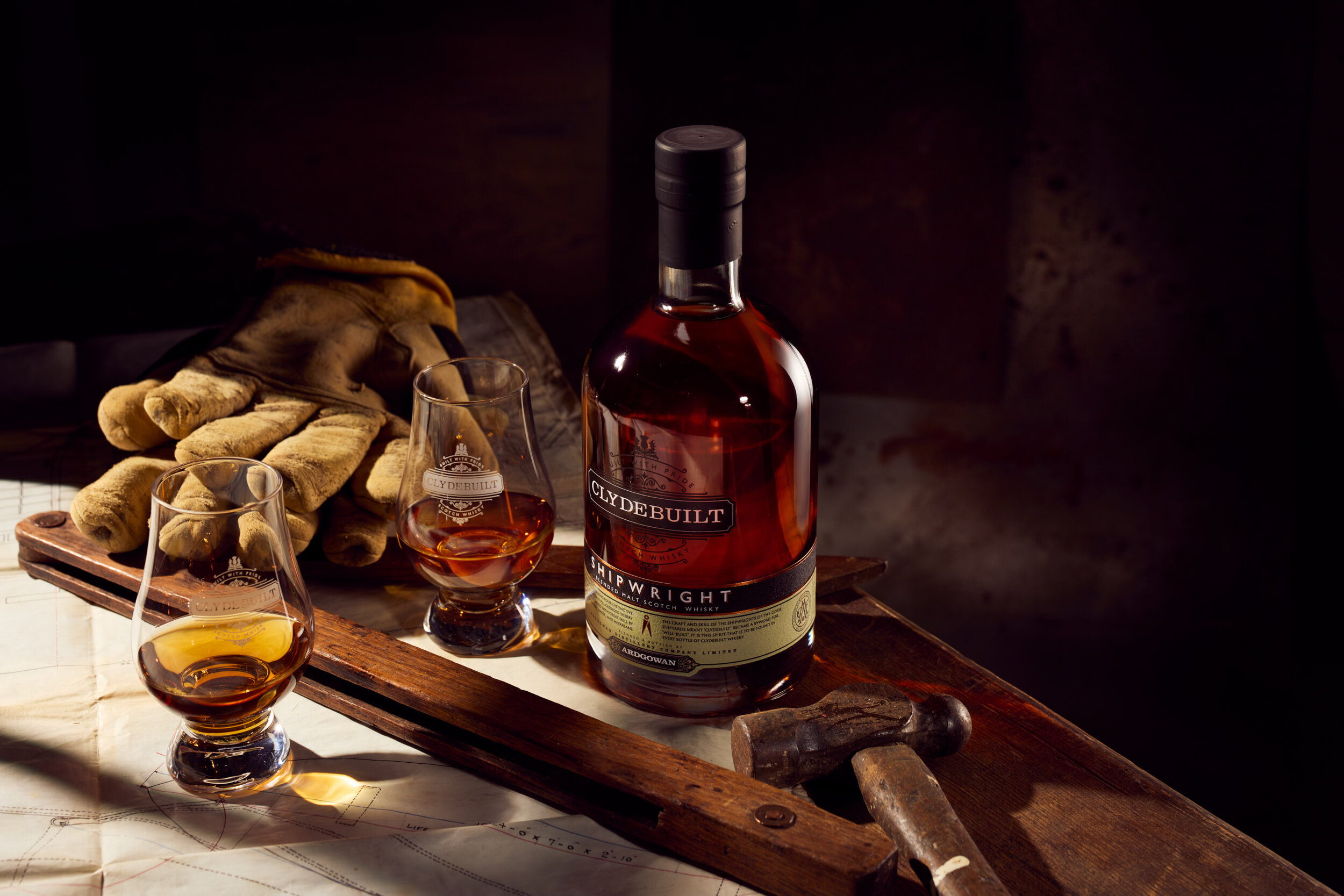
The Clydebuilt series aims to celebrate the pride shown by generations of shipbuilders on the Clyde.
Shipwright is non-chill filtered, non-coloured and has been bottled at 48% ABV.
It has been created by Ardgowan’s master whisky maker Max McFarlane and follows the success of the distillery’s first Clydebuilt release, Coppersmith, which won a silver medal in the 2020 Scottish Whisky Awards (in the blended malt category).
“The feedback we’ve had from Coppersmith gives us great confidence in our ability to craft premium whisky with broad appeal,” says distillery chief executive Martin McAdam [pictured].
“We see a real appetite for quality blended malt and Max has continued this theme with Shipwright – which solely comprises top drawer single malts. I think it is our best dram yet.
“Looking ahead we will continue to source the finest quality casks to develop the next release in the Clydebuilt series, and also for ultra-limited releases in our Discovery series,” McAdam says.
Distillery plans
McAdam also spoke about the distillery’s construction plans.
“Since the moment we launched the business, our goal has always been to build a world-class distillery and visitor centre on the Ardgowan Estate near Inverkip and we are really grateful to everyone who has supported us thus far.
“Naturally, our plans have been on hold for some months due firstly to Brexit and then Covid- 19, but now I am confident we will start work later this year on our one million litre distillery, and we will be in operation by 2023. Of course Max as an Inverkip resident tells me he is ready to start walking to work!
“Ardgowan is en route to the islands, it’s near the sea and I think this will help us create a coastal lowland malt of real character.”
Meanwhile, McAdam and Max McFarlane plan to keep developing new whiskies and bringing them to the market – both in the UK and overseas.
“Until we have our own product on shelves it is very important to generate revenue and demonstrate we have a team that can create great whiskies and forge routes to market around the globe.
“We must never forget that 93 percent of Scotch whisky is exported. We now have distribution in Belgium, The Netherlands, Taiwan and China. We hope to announce progress on distribution in Germany and the USA in the near future,” McAdam concludes.
Discovery 1 sells out in less than a week
Discovery 1 sells out in less than a week
Award-winning Independent Whisky
Bankfoot Farm, Inverkip, PA16 0DT
Discovery 1A limited-edition lowland single malt released on December 1 and bottled by the Ardgowan Distillery Company Limited has been snapped up by the nascent distiller’s growing army of fans – with all 500 bottles sold in less than a week.
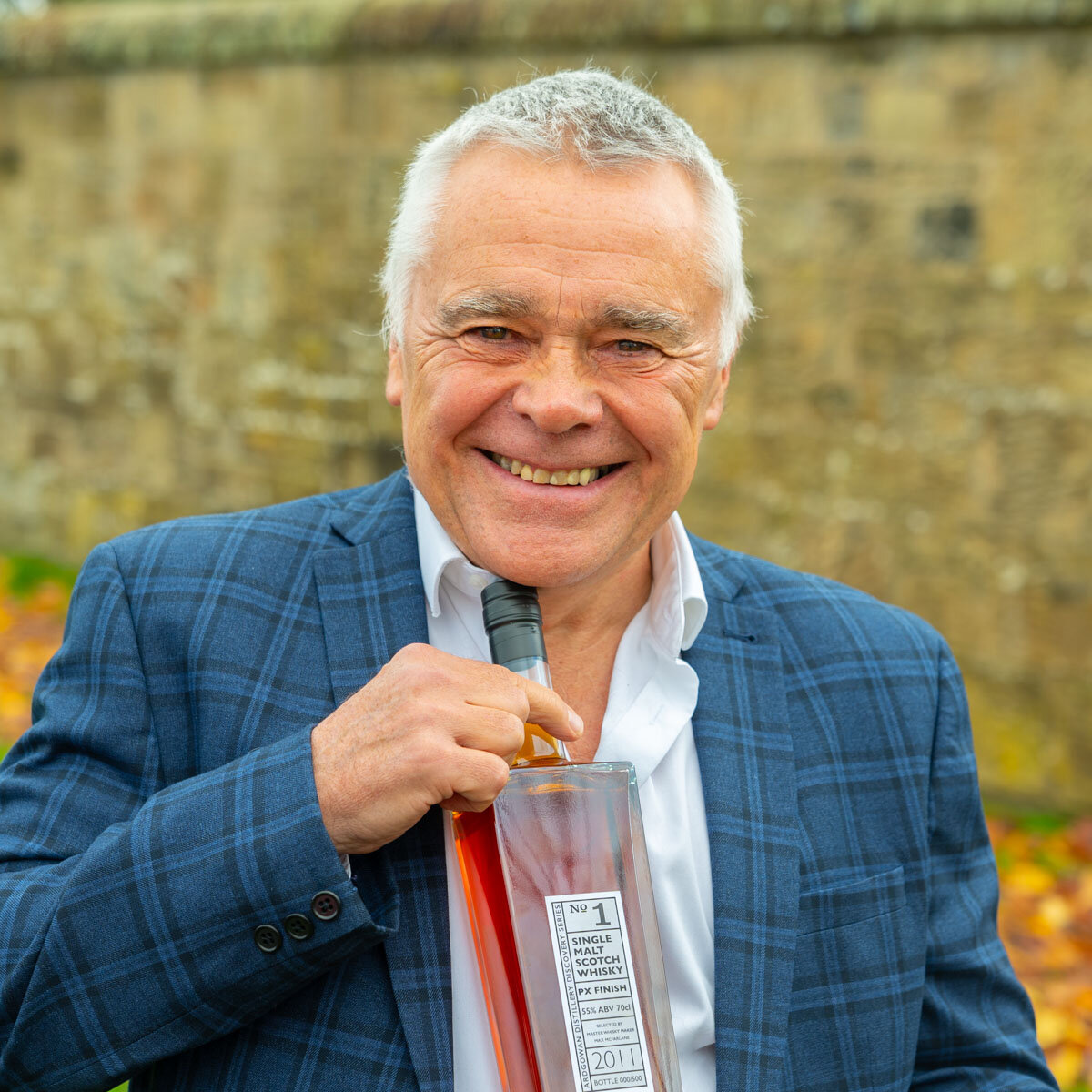
Discovery 1 – a sherry finish single malt, distilled in 2011 – was selected by Ardgowan’s whisky maker Max McFarlane (formerly at Highland Park) as too good to miss.
Max [pictured], whose Inverkip home is around a mile from the future distillery, said:
“I came across it by chance. It’s a lowland malt, which had been sitting in Pedro Ximénez sherry casks for over two years and it tasted just superb – rich and warm with a long fruity finish.
“However, there were only two casks – just enough for a small run.
“We decided to bottle it as the first in our new limited edition Discovery series, and our growing fan base quickly snapped it up. The feedback so far has been superb.”
The success of Discovery 1 comes weeks after Coppersmith – the first in the company’s new Clydebuilt series – secured a silver medal in the Scottish Whisky Awards in the blended malt under twelve years category.
They also secured a gold medal in 2019 for their ultra-limited-edition Expedition 20-year-old.
Commenting on the sales, Ardgowan Distillery CEO Martin McAdam said:
“Anyone who has enjoyed the richness of our Coppersmith blended malt will know how vital sherry oak casks are to Max’s whisky making process and Discovery 1 is no exception.
Martin McAdam continued:
“We now have real confidence we are producing whiskies that our customers love and our business can only grow from here. We are building confidence with our customers and our investors. Next spring we will reveal the next in our Clydebuilt series and I hope to be making an announcement on our distillery plans in the near future.”
Meet our chairman - Willie Phillips
Meet our chairman - Willie Phillips
Award-winning Independent Whisky
Bankfoot Farm, Inverkip, PA16 0DT
Our ChairmanFor anyone inside the whisky industry our Chairman Willie Phillips is a living legend.

He was managing director of The Macallan Malt Whisky from 1978 until the company was bought by Highland Distillers in 1996. During this period, his team’s passionate adherence to the proven quality of The Macallan Single Malt established it as an international brand.
However, when Willie joined the Macallan Distillery in 1974 – moving to Craigellachie from Edinburgh with his wife Margaret and two young children – it was not the global brand it is today.
Joining the team as the distillery’s first accountant, Willie quickly learned the ropes. First, he was given a pair of wellies (he hadn’t been told his role included being farm manager!), and in these early months he worked shifts to understand how the business operated, and to bond with the team. This was helped no end by the fact he also handed out the wage packets – getting to know everyone by name.
“At the time it was a premium product – and possibly the most respected single malt in Speyside – but it wasn’t known abroad,” says Willie, from his home in Balfron.
“It was renowned as the most popular of Speyside’s single malts in bottle, and certainly one of the top three malt whiskies for the blending trade.”
By 1976 Willie was finance director and by 1978 – when the distillery’s major shareholder Peter Shiach became chairman – Willie was appointed Managing Director.
“At the time Peter was very unwell, in fact he was dying,” says Willie “and one day he shared his vision with me.
“He wanted to grow The Macallan into one of the best-known single malts in the world, and he said to me ‘go and do it!’ – so, with Peter’s older brother, Allan at the helm, that is what we did.
“I was very fortunate that we had an amazing team around us. We had a superb marketing director Hugh Mitcalfe, with whom I just clicked, a dedicated production team (two leaders of which were malt whisky afficionados) and we built our brand with quality at the core.
“We had an in-house nosing panel for every bottling where we compared the current bottling with the previous bottling and ones from three years and five years before – to ensure no product drift.”
“It was a very egalitarian operation – with one of the office ladies on the panel, as she had a really good nose,” Willie says.
It was also great timing. Some years earlier, in 1968, the distillery has started laying down stocks in their newly constructed warehouse, so by 1980 they were well and truly ready to go.
It was the start of The Macallan’s meteoric rise.
Allan, Willie, Hugh and the team spearheaded a highly innovative PR and marketing campaign, including renaming their whisky The Macallan – which, as awareness grew, became The Macallan, The Malt.
They ran a series of funny, quirky (and relatively cheap) adverts – including a series of ads beside the Times crosswords – and did a major PR push in the US.
This included weeks spent stateside where Willie and Hugh independently would – quite literally – walk into retailers to convince them to carry their malt.
Willie recounts going into Sherry Lehmann’s liquor store on 5th Avenue, New York, no less than four times before the store owner relented and gave Willie an audience.
They also brought their US PR and sales people to Scotland for a top-drawer trip of a lifetime, where they toured Edinburgh, played golf in St Andrews, visited Glen Coe, ate at Rogano, went to ceilidhs and enjoyed the very finest food and drink on offer – as well as trips to more colourful venues such as the Drovers Inn by Loch Lomond!
This was topped off by a visit to The Macallan.
“As I said to them at the time, I just wanted them to return to the US with a wee bit of Scotland in their hearts, and truth be told there were tears in many of their eyes as they left from Glasgow airport,” Willie recounts
The plan was a vast success – sales stateside and world wide continued to rise and in 1988, The Macallan won The Queen’s Award for Export.
And this success has continued to today – where The Macallan remains one the world’s best known and respected whisky brands.
The distillery was subsequently bought by Highland Distillers in 1996, and the year after Willie and his wife Margaret moved to France to start a new adventure with a role as Managing Director of Janneau SA, an Armagnac company, where they stayed for six years.
Since then he has retained a passionate interest in whisky and the industry, leading a consortium in an unsuccessful attempt to buy Tamdhu distillery, appointed as an early non-executive director during the construction and the completion of the Isle of Harris distillery, and then in 2017 he took a call from his old friend and colleague, Max McFarlane.
“Max and I have known each other many years and he was very enthused about the Ardgowan Distillery which is taking shape on his doorstep at Inverkip.
“He introduced me to the business owners Martin McAdam and Alan Baker and I was impressed with their plans. I asked them how I could help, and they asked me if I would be Chairman – which I accepted.
Since then Willie has worked closely with the distillery team – and was instrumental in the selection of the whisky used for Expedition 20-year-old, which he selected and blended from his own industry sources. It was subsequently awarded a gold medal in in the 2019 Scottish Whisky Awards.
Together with Max, he has stressed the impact of quality casks on the finished product – advice which has gone into the release of Coppersmith – which comprises only single malts wholly matured in first-fill Oloroso sherry casks.
“You can do all of the marketing and all of the promotions that you like – but ultimately it is the spirit in the bottle that counts. Quality is the key,” Willie concludes.
To that we should always be able to raise a second glass!
It's cloudy but fine!
It's cloudy but fine!
Award-winning Independent Whisky
Bankfoot Farm, Inverkip, PA16 0DT
Cloudy WhiskyHave you ever poured yourself a dram, added some ice, and noticed your whisky go cloudy? Or taken a bottle from the back of a cold cupboard and spotted the same?
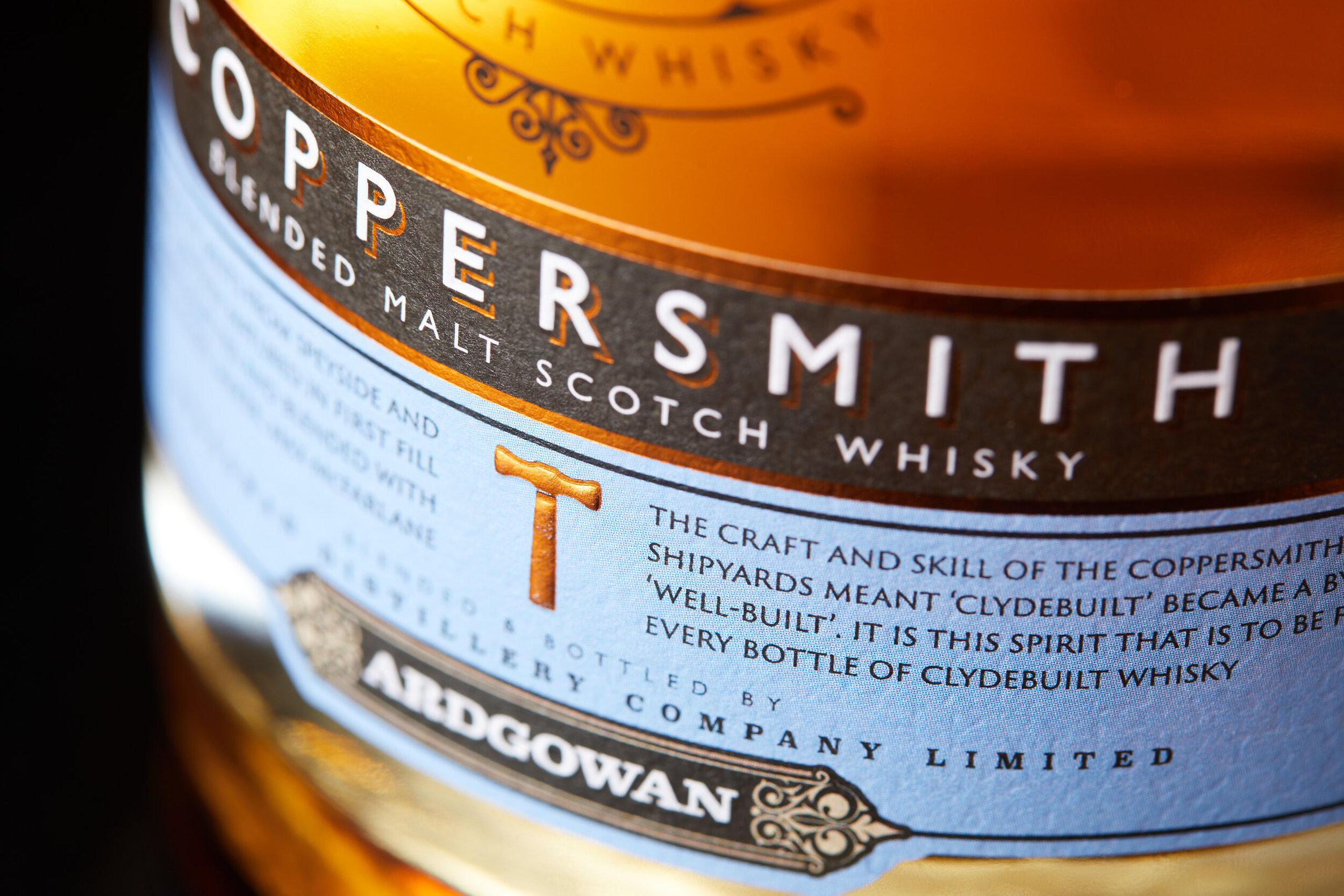
Have you ever poured yourself a dram, added some ice, and noticed your whisky go cloudy? Or taken a bottle from the back of a cold cupboard and spotted the same?
It might be something you have never seen. But if you do have any whisky that is non chill filtered, you could add some ice and just see what happens!
A few people who have purchased Coppersmith – which is non chill filtered – have noticed their whisky go cloudy and have been in touch to find out if something is wrong.
The simple answer is: “No, it’s cloudy but fine!”
It’s just caused by some wonderful aromatic compounds call esters (and also fatty acids) which are a natural part of your dram. These compounds have large molecules which, at lower temperatures, can separate out of solution to make your whisky appear cloudy.
A lot of distillers chill filter their whisky prior to bottling – by cooling the spirit to four degrees and passing it through fine mesh sieves – to remove these naturally-occurring compounds. This ensures that consumers are always guaranteed a crystal-clear measure.
But to my mind this occasional cloudiness signifies that what you have in your glass is as close as possible to the spirit that came out of the original cask.
To get rid of the cloudiness, just let your whisky come up to room temperature and the clouds will disappear.
That’s the short answer!
The long answer – if you’d like to find out more – is a wee bit more complex!
Pour yourself a dram, add some ice (if you like!) and read on….
The science of whisky
With whisky, many stories and mythologies abound. All of these stories and mythologies conspire to create a great mystique around whisky – which is great if it encourages people to appreciate and explore the great whiskies of Scotland, but not so good if it will put someone off.
Chill filtering is a topic that divides whisky drinkers. I know plenty of people who will dismiss whisky that has been chill filtered as an inferior product. I’d like to explore the use of chill filtering in the industry and what it means. Is it inferior and what does chill filtering do anyway?
So, let’s start by explaining the science. As we all know, Scotch whisky is not just alcohol and water. It is a very complex mixture of a huge number of organic compounds – including natural fatty acids, esters and proteins.
Where do these compounds come from?
Well, they are introduced at each step of the process, and the exact combination depends on the type of malted barley (and grain) used to make the whisky, the type of yeast, as well as fermentation time and the distillation process. It also depends on the casks used to mature the whisky.
These compounds produced during mashing, fermentation, distillation and maturation all end up giving the whisky its distinctive nose and flavours.
That is what makes each whisky unique!
For example, one of the areas of great interest is the wood used in maturation. The oak imparts different types of aldehydes to the whisky, and one of the best known is vanillin, which gives the vanilla note to the nose. Other aldehydes can give the familiar almond and grassy notes.
One of the other major contributors to the nose of a particular whisky are compounds known as esters. These occur when alcohol and a natural acid react together. These esters are bigger heavier molecules and are really important in the contribution of a fruity nose to the whisky.
Bananas, vinegar and pear drops!
Each ester’s name comes from the alcohol and the acid that produced it.
So for example one of the simplest esters is ethyl acetate which comes from ethyl alcohol (the primary alcohol in whisky) and ascetic acid (a natural acid found in the fermentation process, also known as common or garden vinegar!)
As an ester, ethyl acetate is what gives a whisky that pleasant pear-like nose.
If you have ever tried a pear drop, its distinctive flavour comes from the esters isoamyl acetate (banana) and ethyl acetate (pear).
Other esters formed with increasingly complex natural acids and with other types of alcohol create increasingly complex aromas in the whisky and so we get raspberry, peach, pineapple and so on.
The interesting thing is that esters are formed during each of the processes in whisky making – during fermentation, during distillation and during maturation.
So if you want a fruity nose to the whisky, many distilleries will go for a longer fermentation time – the esters are formed and we get that great banana and pineapple nose.
Another common ester is ethyl formate (an ester of ethanol and formic acid) which has the characteristic smell of rum and can also be picked up in the nose as raspberries.
There is a very interesting graphic here showing the variety of aromas based on the alcohol and natural acid used in the formation of the ester. With thanks to James Kennedy.
To filter or not to filter?
The downside of larger esters (and the fatty acids also found in whisky) is that they are more complex molecules and as a result they are more difficult to dissolve.
If we have a whisky with a high alcohol level (around 48% ABV) all of the complex esters and fatty acids will almost always stay in solution and the whisky remains clear.
But if the whisky gets cold or the concentration of alcohol is lower (and many whiskies are bottled at around 40% ABV), the esters begin to separate out of solution and you can see them as wispy clouds in the whisky bottle.
You can create this effect at home by adding some water and ice to your favourite non-chill filtered whisky – after a few minutes the whisky will become cloudy.
Many customers do not appreciate looking at a cloudy whisky, so many distilleries chill filter their spirits to remove the esters.
To do this, they chill their whisky to lower than four degrees centigrade and once chilled, pass the whisky through a series of tightly knit metallic meshes or paper filters under pressure to separate out the fatty acids and cloudy esters.
This means that a customer who adds water or ice will enjoy a whisky without the cloudiness.
As an alternative, many distilleries bottle their whisky at 48% alcohol and above. This ensures that the higher concentration of alcohol will (in most circumstances) keep the esters dissolved and the whisky clear.
However, if you cool the bottle down – even at 48% the whisky may become cloudy. This is what has happened with a few bottles of Coppersmith (which is 48% ABV). Simply warming it up again and giving the bottle a good shake will restore the whisky to a non-cloudy state.
Does it matter?
Well although many distilleries insist that chill filtering has little or no impact on nose or flavour, I would tend to disagree. If you remove any element from whisky – particularly those compounds that contribute so much to a dram’s nose – then surely it will affect the final product.
That needs to be balanced against the aesthetic of seeing a cloudy whisky. However, comparing a chill filtered product against a non-chill filtered product is impossible; no distillery that I know of releases both a chill and non-chill filtered version of the same product.
As always with whisky, there is no right or wrong.
If you enjoy the non chill filtered whisky – great, continue enjoying it. If your favourite dram is a chill filtered dram – enjoy it too!
But remember: whisky is a journey, never be afraid to explore.
By Max McFarlane, Master Whisky Maker, the Ardgowan Distillery
Whisky while we wait
Whisky while we wait
Award-winning Independent Whisky
Bankfoot Farm, Inverkip, PA16 0DT
Whisky while we waitIf there is one thing I have learned since starting our distillery project, it is patience.
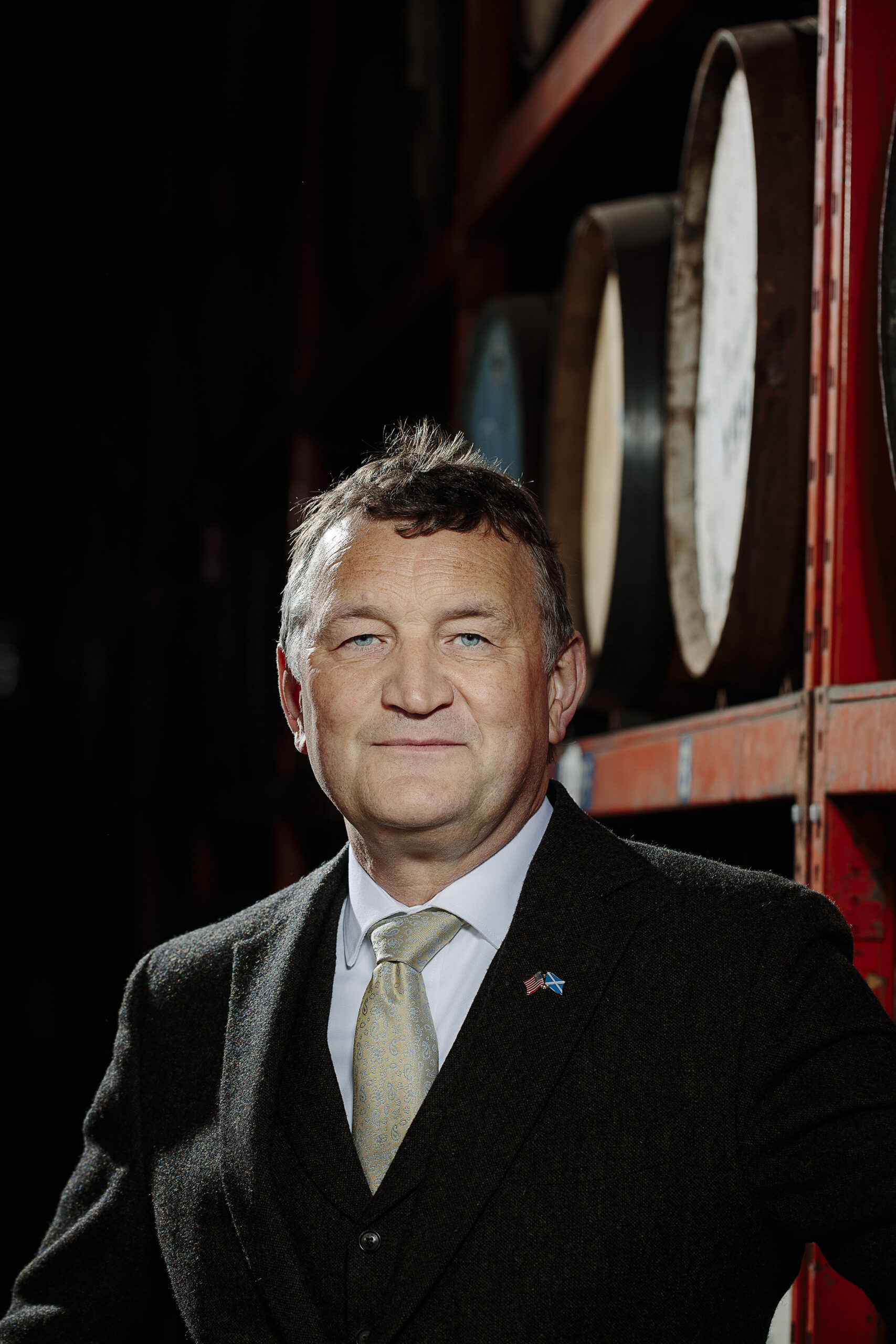
The whole team is hugely excited about our plans for our distillery and visitor centre at Inverkip – and the challenge for us is that it all takes time.
Time to develop our plans, time to secure planning consent and of course time to secure all of the investment we need to get spades in the ground and see our vision take shape. We anticipate this will happen in 2021.
Once the Ardgowan Distillery is built and our stills are running, our new whisky has to mature for at least three years in casks before it can be classed as Scotch whisky.
This makes it a tougher business than almost any other to break into – our shareholders put their own money at risk to build our project and yet wait years before they can see a return.
So, unless a new distillery is being built by a multinational that can afford to wait, independent distillery owners such as ours need to generate some cashflow to pay their employees and keep the project running until the whisky starts to flow.
Which is why all newbuild distilleries undertake some kind of spirit selling to keep the boat afloat – whether it is branded gin or labelled whisky, or casks yet to mature.
This is something we are doing with Coppersmith – the first in our Clydebuilt range of Scotch whiskies. We are very fortunate to have Max McFarlane, a world-class whisky maker (and Inverkip local), on our team.
He has written a great blog post on our web site which talks all about how he came to make Coppersmith – using premium casks from some of the finest distilleries in Scotland.
If you look back at whisky history, you’ll find our approach is not entirely new.
There was one far-sighted businessman from Kilmarnock who used to sell single malt from his grocer’s shop – but the quality was never that good. So he started mixing and blending whiskies and selling them from the shop.
His name?
Johnnie Walker.
Back then, he did not own a distillery. But the rest, as they say, is history – and since then the company that owns the Johnnie Walker label now owns and manages a number of flagship distilleries Scotland-wide.
And today there are still plenty of businesses – like the original Johnnie Walker – that blend and market whiskies without owning the distilleries themselves.
So what we are doing with Coppersmith, and our future range of Clydebuilt whiskies, is nothing new – and in fact is old as the whisky industry itself.
By making and selling Coppersmith, we generate some income which helps pay the wages of our team and gives us invaluable experience in the trade. And I am pleased to see we are getting some great plaudits and awards for what we have produced.
Our vision remains the same – to build a fantastic new distillery and visitor centre in Inverclyde and create jobs and economic activity in the process.
Great whisky takes time to make. And patience.
By Martin McAdam, Chief Executive Officer, the Ardgowan Distillery
Single and blended malts – what is the difference?
Single and blended malts – what is the difference?
Award-winning Independent Whisky
Bankfoot Farm, Inverkip, PA16 0DT
Single and blended maltsI have spent a lifetime in the whisky industry, and I have enjoyed every moment of it. One of my proudest achievements was creating Highland Park 18-year-old – recognised by many as one of the world’s finest whiskies, and still one of my favourite drams.
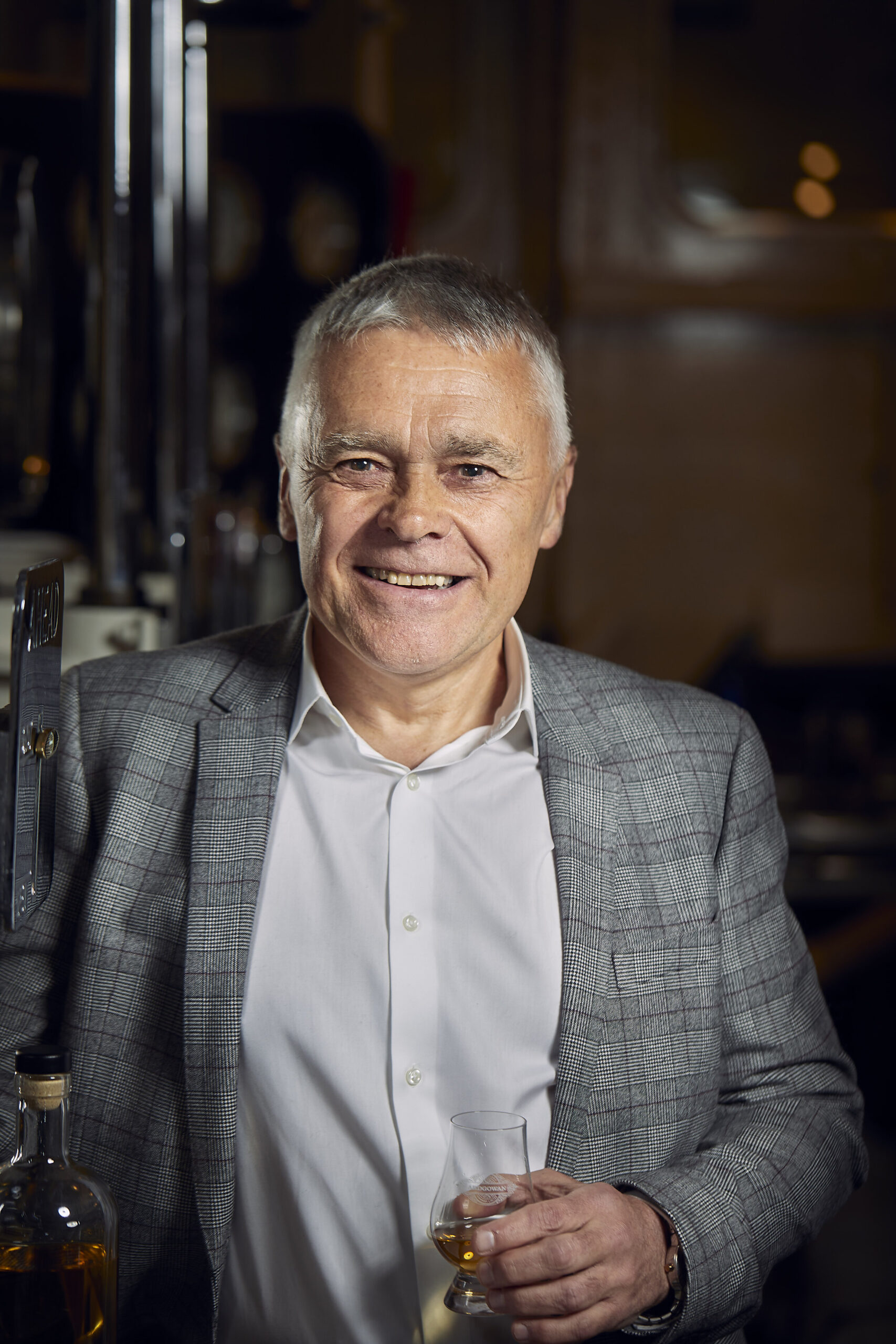
Single malts are viewed by most as the crème de la crème of the Scotch whisky world.
According to the rules, a single malt Scotch whisky is a Scotch whisky produced from only water, yeast and malted barley at a single distillery by batch distillation in pot stills.
However – as many of you will know – there is a huge variation between individual casks. The wood is different, the location in the warehouse is different and indeed different casks may be even matured in different warehouses.
Every cask has its own unique characteristics; some casks will never make it into a single malt – they are just not good enough or they can have an off note, caused by some stray bacteria left in a cask. The spirit in each may have a different colour or a different alcohol content.
Yet the customer quite rightly expects that the bottle of 12-year-old single malt he or she buys this year will be exactly the same as the bottle of 12 year old they bought from the same distillery the year before, and the year before that, and next year too!
So, given that every cask is even just a wee bit different to the one next to it, how can a distillery guarantee that their bottle of single malt is the same product, year in, year out?
Well, that is where whisky makers such as I have the glorious job of taking a great selection of single malt casks – from the one distillery – and carefully crafting them into the same consistent product our customers know and love.
Smell and taste of course are the key – and we spend many days, weeks and years learning our trade – so we can sniff and taste the subtle differences which make each single malt unique.
And let’s not forget colour too. To my mind the best single malts are uncoloured – they have no caramel added – and the richness of hue in the bottle comes from the sherry casks in which they have lain for years.
So in the end all we do is to carefully blend the casks (yes, blend them!) for aroma, taste and colour, and the only thing we add is water to bring the malt to a consistent ABV. To give a naturally-coloured, non-chill filtered, truly wonderful single malt.
It sounds simple, but believe me it is not!
In some years, when we are making say, a 12-year-old, we may add some older casks (but never younger!) from the same distillery to give us the final product our customers expect.
That is what I did for many years for many different whisky brands.
Now, some people say that they will only enjoy a single malt and indeed I have entertained many visitors who have said that they only drink a certain age of whisky. Everyone should enjoy the whisky they want, and, in the way, they want it but for me whisky has always been and will always be a journey of exploration.
I have nosed and sampled hundreds of thousands of individual casks and thousands of whiskies. Single malts have brilliant characteristics and once you go on the journey you will explore more and more and many times you will come back to your trusted brand, nose and flavour.
Which brings me to a blended malt – a category which has created a lot of interest in recent years.
Again, the rules say that a blended malt Scotch whisky is a blend of two or more single malt Scotch whiskies from different distilleries and, as such, their flavours are as rich and varied as the entire distillery map of Scotland, from honeyed fruitiness to full-on peat smoke.
For a whisky maker, the world of possibilities expands enormously, and blended malts allow a maker to imagine the whisky they want, and then create it using a much greater palette of ingredients.
This is what I am now able to do at the Ardgowan Distillery Company, which will be building a distillery in my home town of Inverkip.
It will be a few years until we will be producing our own spirit, so in the meantime they have given me free reign (more or less!) to create my own series of whiskies under the ‘Clydebuilt’ label.
This allows me to seek out and find the best casks – of whatever age and location – and bring them together to create our very own series of whiskies. And in many cases these will be blended malts.
Our first whisky – Coppersmith – is to my mind unique. Every whisky in this blended malt has been matured in first-fill Oloroso sherry casks, giving an end result that is as rich as a Christmas cake, with a super balance of sweet and spicy, heather honey, sultanas and very dark chocolate. As far as I know, this is the first time a blended Scotch malt has been made with 100 percent first-fill casks.
I am very proud of it, and in the Clydebuilt series we will definitely introduce another blended malt in the fairly near future. After that – well let’s wait and see!
While I will always enjoy single malt, I believe blended malts offer an exciting new way for whisky lovers to taste and enjoy Scotland’s greatest natural product.
Be brave, be adventurous, and nose a blended malt today!
| Scotch whisky type | Definition |
|---|---|
| Single malt Scotch whisky | Scotch whisky produced from only water and malted barley at a single distillery by batch distillation in pot stills |
| Single grain Scotch whisky | Scotch whisky distilled at a single distillery but which, in addition to water and malted barley, may also be produced from whole grains of other malted or un-malted cereals |
| Blended Scotch whisky | A combination of one or more single malt Scotch whiskies with one or more single grain Scotch whiskies |
| Blended malt Scotch whisky | A blend of two or more single malt Scotch whiskies from different distilleries |
| Blended grain Scotch whisky | A blend of two or more single grain Scotch whiskies from different distilleries. |
Max McFarlane, Master Whisky Maker, the Ardgowan Distillery
Ardgowan Expedition takes silver in Hong Kong international whisky awards
Ardgowan Expedition takes silver in Hong Kong international whisky awards
Award-winning Independent Whisky
Bankfoot Farm, Inverkip, PA16 0DT
NEWSThe Ardgowan Distillery’s very first whisky ‘Expedition’ has been awarded a silver medal in the 2019 Cathay Pacific Hong Kong International Wine & Spirit Competition (HKIWSC). The 20-year-old premium blended malt won silver in the Blended Malt Scotch Whisky 16 to 20 year old category at the prestigious awards announced in Hong Kong today.
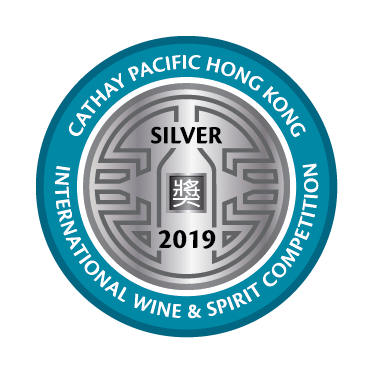
The exclusive dram – which was created specially by Ardgowan Chairman Willie Phillips – was ranked against its peers in a blind tasting by an international panel.
Commenting on the win Ardgowan Chief Executive Martin McAdam said:
“Our Chairman Willie Phillips is the driving force behind our Expedition whisky. You can have the best marketing in the world but the liquid in the bottle needs to be great.
“This is our third award for Expedition, and we are very thankful to Willie for guiding us in producing something special, to our customers who have purchased and enjoyed the whisky and to the judges at Hong Kong International Wine & Spirits Competition who have acknowledged the quality of this beautiful liquid.”
Ardgowan Expedition 20-year-old is a blended malt which includes classic single casks from upper Speyside and the northern Highlands. The 600-bottle run also contains whisky which has travelled to the South Pole and back, carried by Polar Explorer Robert Swan OBE.
Each bottle, which retails at £499, has been personally signed and numbered by Willie Phillips, who rose to fame as the managing director of The Macallan from 1978 to 1996.
It can now be purchased online at the Ardgowan Distillery online shop.
“We did something special with Expedition – it is not only a great whisky but also a collector’s item. Since releasing Expedition we have now brought Max McFarlane (formerly Master Distiller/Blender at Edrington) on board and he has already created our new limited-edition Coppersmith whisky which is now available under the Clydebuilt by Ardgowan label,” McAdam says.
McAdam concluded that his company is now working hard on establishing local distribution for their Expedition and Clydebuilt whiskies in the Hong Kong market.
Ardgowan Distillery launches Coppersmith – the first in series of limited-edition premium whiskies
Ardgowan Distillery launches Coppersmith – the first in series of limited-edition premium whiskies
Award-winning Independent Whisky
Bankfoot Farm, Inverkip, PA16 0DT
NEWSThe Ardgowan Distillery has launched Coppersmith – the first in a series of limited-edition whiskies. The premium dram – which retails at £49.99 – is a blend of malts from Speyside and Highland distilleries wholly matured in first fill Oloroso sherry casks. It has been created by Max McFarlane, one of the world’s top whisky makers, who recently joined the Ardgowan Distillery team.
“Coppersmith is the first in the Clydebuilt series of whiskies which Ardgowan Distillery will release in the years ahead,” says Max.
“Each bottle in the series will celebrate the pride shown by generations of workers on the Clyde, who together built some of the world’s most illustrious ships.
“In our first release I wanted to produce a top-drawer blended malt and I believe that is what we have achieved,” says Max.
Coppersmith is non-chill filtered, non-coloured and has been bottled at 48% ABV.
It is described as: “A whisky to savour, which oozes opulence and stunning cask maturation with a super balance of sweet and spicy, heather honey, sultanas and very dark chocolate, with a long, dry finish.”
The whisky will be available in selected retailers from October 1 and is now available to pre-order online via the Ardgowan Distillery online shop (UK and Ireland only).
The new release follows the recent success of the distillery’s Expedition blended malt which won the gold medal in this year’s Scottish Whisky Awards for the best blended malt over 12 years old.
The Ardgowan Distillery Company Limited project is being developed in Max’s hometown of Inverkip, 30 miles west of Glasgow.
Max joined the company to help the fledgling distillery develop its whisky-making skills and deliver the Clydebuilt series. In the years before the distillery’s own products are available the company intends to develop its whisky making skills and build strong relationships with both UK and global customers by creating where possible unique, collectable and desirable whiskies.
The CEO of Ardgowan, Martin McAdam said:
“The first steps on our journey in developing our distillery is to bring together a great team. We have Willie Phillips our chairman and now Max McFarlane, both of them are amazing whisky legends. We are in awe of their skill. The starting point with both of them is quality. With Willie we created our Expedition blended malt and now with Max on board we are very excited by his ideas and creativity.
“Bringing these products to market helps establish our brand and demonstrates to the world that we have a team that can create great whiskies. Until we have our own product on shelves it is also very important to generate revenues from these initial products and forge routes to market around the globe. We must never forget that 93 percent of Scotch whisky is exported,” McAdam says.
For over forty years Max was whisky maker for Edrington where he ensured the quality and consistency of some of the industry’s most iconic brands, including Famous Grouse, Cutty Sark, Bunnahabhain, Tamdhu and Highland Park. He was appointed a Keeper of the Quaich in 2017.
“You can see why we are so privileged to have him on board,” McAdam says.
The Ardgowan Distillery has already received planning permission for their one million litre facility and will commence construction next year. They plan to start distilling in 2021 and aim to produce a flagship seven-year-old alongside a range of younger single malts.
Max says he is delighted to be working so close to home:
“When I first heard there would be a new distillery in Inverkip I knew immediately I wanted to be involved. It’s my home town and I have long thought that Inverclyde is a natural area for a distillery,” Max says.
“It’s en route to the islands, it’s near the sea and I think this will help us create a coastal lowland malt of real character.
“Of course, this will be a number of years away, but our new Clydebuilt series will give us something to enjoy while we wait.”978 to 1996.
“We did something special with Expedition – it is not only a great whisky but also a collector’s item. Since releasing Expedition we have now brought Max McFarlane (formerly Master Distiller/Blender at Edrington) on board and he is now working with the team to create our next set of whisky releases which will be under theClydebuilt by Ardgowan label,” Martin McAdam concludes.
